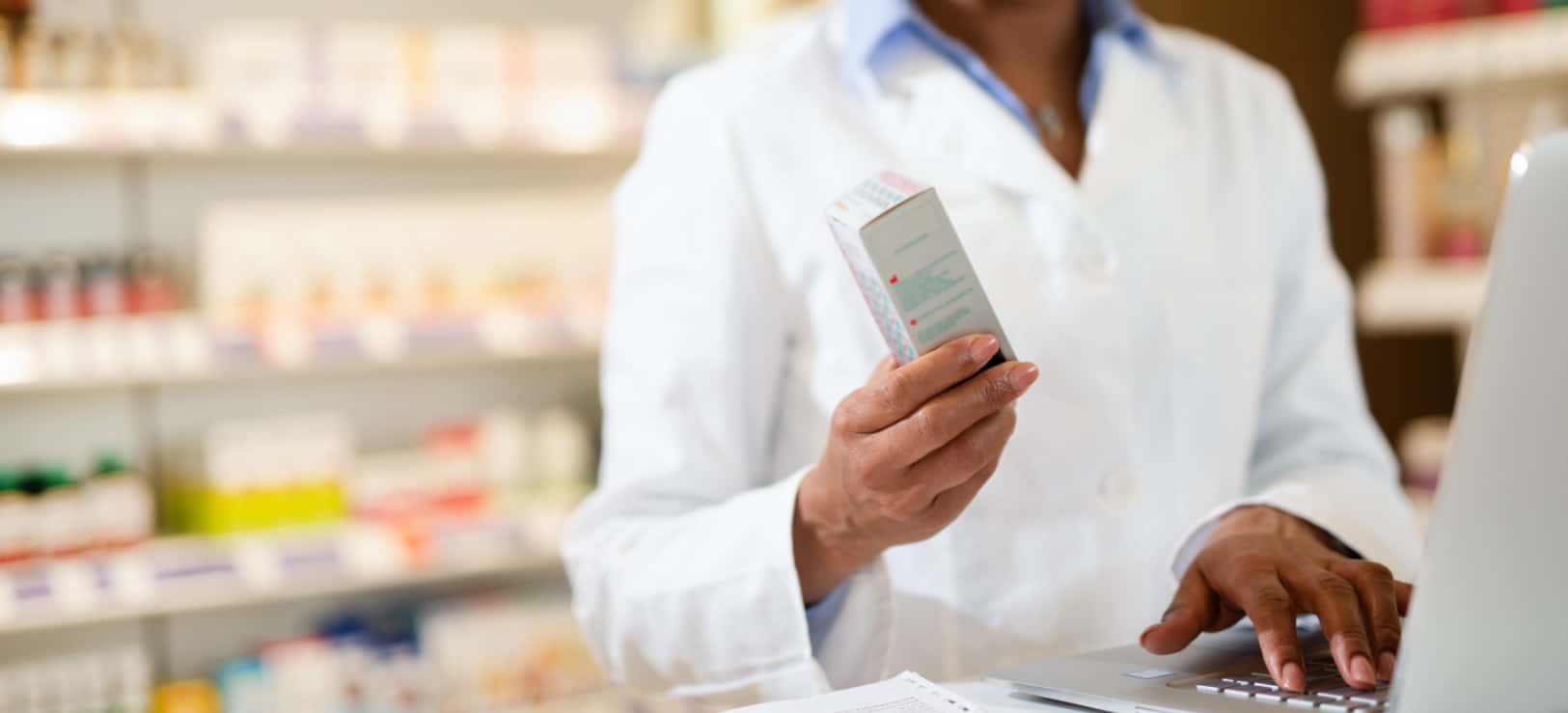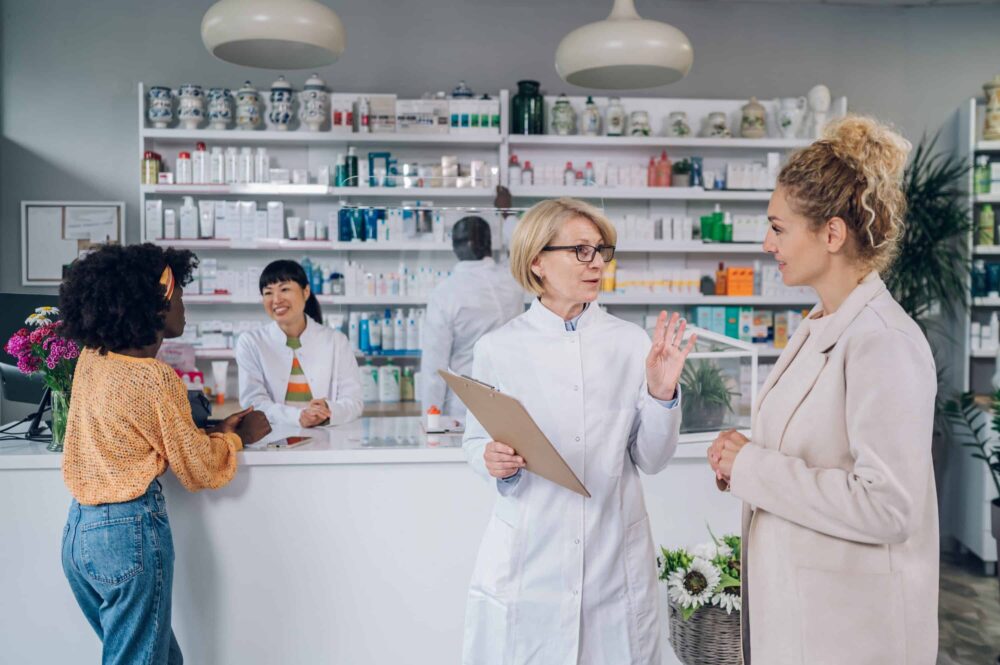M&D Clinical Corner: Overview of Biosimilar Drugs
The Clinical Corner is a monthly feature that highlights a variety of important pharmacist topics that is written by Morris & Dickson’s staff pharmacist, Paula Belle (RPh).
This month’s Clinical Corner will provide an overview of biosimilar drugs including:
- The pharmacist’s role
- Definitions
- Approved biosimilars
- Substituting biosimilars for reference products
- Resources for pharmacists
- Resources for patients

The Pharmacist’s Role
- If the FDA approves a biosimilar as an interchangeable biosimilar, pharmacists can make the substitution in accordance with their state laws. This can be particularly helpful for patients looking for a less expensive option. [1]
- If the reference product is too expensive for the patient, the pharmacist can make the patient and prescriber aware that there is a more affordable biosimilar available. [1]
- Pharmacists can tell patients about the safety and efficacy of these medications and their use in an array of diseases. They can also advise that biosimilars are typically more affordable treatment options compared to the reference product. [2]
- For guidance on patient consultations, pharmacists may consult “Biologics And Biosimilar Drug Products: Pharmacist Guide To Patients’ Frequently Asked Questions” here
Definitions
Biological
- Biological drugs, or “biologics” are derived from natural and living products such as microorganisms (e.g., bacteria or yeast) or plant and animal cells. Therefore, they can be composed of living cells, tissues, proteins, sugar, and more. [3]
- Because biologics come from the aforementioned sources, not all biologics are exactly the same. This is different than small molecule drugs, which are less complex and identically manufactured. It is more difficult to manufacture biologics as they need to be purified and processed. [3]
Biosimilar
- Biosimilars are biologic drugs that are similar to another approved biologic. [3]
- The previously approved biologic is known as the “original biologic”, or reference product. [3]
- Biosimilars are made the same way with the same natural materials, have the same dosages and strengths, are administered the same, and have the same side effects. [3]
- Clinically, there are no differences between an original biologic and its biosimilar. Therefore, safety and efficacy amongst biosimilars would be the same as the reference product. [3]
- Biosimilars allow for expanded treatment options, more affordable care, and increased innovation by introducing competition to the pharmaceutical market. [3]
Interchangeable Biosimilar
- Both biosimilars and interchangeable biosimilars must have the same safety and efficacy clinically as their reference product. [4]
- However, an interchangeable biosimilar is a subtype of biosimilars that meets other regulatory requirements. [4]
- Depending on state laws, pharmacists can generally substitute an interchangeable biosimilar for its reference product without the need for authorization from the provider. [4]
Biosimilars vs generics
- When compared to generic medications, biosimilars are similar in some ways and vary in others. [3]
- Similarities
- Both generics and biosimilars are based on a medication previously approved by the FDA. They are also typically less expensive than the original product. [3]
- The FDA offers expedited programs for approving generics and biosimilars. Because they are the same or similar to the reference product, the review process is not as extensive. [3]
- Differences
- The sources used to make generics and biosimilars are different. Pharmaceutical companies make generics using chemical ingredients, whereas biosimilars are derived from living and natural components. [3]
- The chemicals in generics can be replicated exactly, making all generic drugs and their reference product the same. However, the natural and living ingredients used in biologics cannot be copied exactly. Therefore, review and approval of biosimilars is more intensive than for generics. [3]
FDA Approval Process for Biosimilars
- The FDA has a rigorous process by which they review biosimilars. When reviewing biosimilars, they ensure they are safe and efficacious by:
- Reviewing studies and tests. [3]
- Ensuring quality throughout production. [3]
- Monitoring for safety and effectiveness after approval. [3]
- Reviewing patient safety reports made to the FDA. [3]
Approved Biosimilar
- Biosimilars can treat a wide array of conditions, including cancer, arthritis, bowel diseases (e.g. Crohn’s, irritable bowel syndrome, colitis), psoriasis, and kidney conditions. [3]
- The first FDA-approved interchangeable biosimilar is Semglee® (insulin glargine-yfgn), an insulin product. This was approved by FDA in July of 2021. [5]
- A wave of Humira® biosimilars is expected in 2023. [6]
| NAME | DEVELOPER | EARLIEST LAUNCH DATE |
|---|---|---|
| Amjevita© | Amgen | January 2023 |
| Abrilada© | Pfizer | July 2023 |
| Cyltezo© | Boehringer Ingelheim | July 2023 |
| Hadlima© | Organon/Samsung Bioepsis | July 2023 |
| Hulio© | Biocon | July 2023 |
| Yusimry© | Coherus Biosciences | July 2023 |
| Hyrimoz© | Sandoz | September 2023 |
- This link includes a list of all FDA-approved biosimilar products.
- The FDA also created the “Purple Book”, an online database with information regarding FDA-approved biologics, biosimilars, and interchangeable biological products. [7]
- The Purple Book also has information on cell and gene therapy, vaccine, and hematologic products approved by the Center of Biologics Evaluation and Research (CBER). [7]
- Find the Purple Book at this link.
Substituting Biosimilars for Reference Products
- Typically, pharmacists can substitute a reference product for a biosimilar. [3]
- Pharmacists can substitute with biosimilars if the FDA approves the interchangeability. However, these substitutions are subject to state pharmacy laws. These laws may be different from state to state. [1]
- For example, a state law might require the pharmacist to communicate with the prescriber and patient and document the change before making the substitution. [1]
- Always confirm your state’s laws with your board of pharmacy. [1]
- A list of biosimilar interchangeability laws by state is available at this link.
- If the FDA has not established interchangeability with the reference product, pharmacists cannot make the substitution on their own. In this scenario, pharmacists can only dispense biosimilars if it is specifically prescribed by the provider. [1]

Resources for Pharmacists
- A recent study indicated that only 20 percent of pharmacists knew that they could substitute FDA-approved interchangeable biosimilars without requiring prescriber approval. [8]
- Some resources that may assist pharmacists with their understanding of biosimilars include the following:
- FDA fact sheet “Overview of Biosimilar Products“
- FDA fact sheet “Interchangeable Biological Products”
- Information on prescribing biosimilar and interchangeable biosimilar products found here
- FDA curriculum for healthcare providers on biosimilars found here
- Information to understand how the FDA reviews and approves biosimilar products
- Recent articles on biosimilar products
- The FDA has a number of educational videos on biosimilars and their development
- Online quiz to test understanding of biosimilars
Resources for Patients
- FDA “Biosimilars Basics for Patients”
- FDA Infographic “Biosimilars: Are They the Same Quality?”
Paula Belle (BS Pharmacy, RPh) has been the Clinical Programs Coordinator for Morris & Dickson since 2016. Prior to joining M&D, Paula held the positions of Clinical Pharmacist with Pharmacea Services and PharmMD/Adhere Health, as well as Market Pharmacist, Store Pharmacy Manager and District Pharmacy Supervisor with Walgreens. She holds a BS in Pharmacy from the University of Louisiana at Monroe, as well as Immunization and MTM Certifications from the American Pharmacists Association (APhA).
Stay connected with Morris & Dickson by following us on Facebook, LinkedIn, Twitter, Instagram and YouTube.
Sources
- American Pharmacists Association. Biosimilars. 2023; Available from: https://www.pharmacist.com/Advocacy/Issues/Biosimilars/.
- Jennifer Gershman, P., CPh, Biosimilar Update and the Pharmacist’s Role in Education. 2021. 165.
- Food and Drug Administration. Basics for Patients | FDA. 2023; Available from: https://www.fda.gov/drugs/biosimilars/basics-patients.
- Food and Drug Administration. Overview for Health Care Professionals | FDA. 2023; Available from: https://www.fda.gov/drugs/biosimilars/overview-health-care-professionals.
- American Pharmacists Association. Biologics and Biosimilar Drug Products: Pharmacist Guide to Patient’s Frequently Asked Questions. 2023; Available from: https://www.pharmacist.com/Advocacy/Issues/Biosimilars/Biologics-and-Biosimilar-Drug-Products-Pharmacist-Guide-to-Patients-Frequently-Asked-Questions.
- Zamecnik, A. Humira biosimilars set the stage for long-awaited 2023 US launches. Pharmaceutical Technology 2022 [cited 2023; Available from: https://www.pharmaceutical-technology.com/features/humira-biosimilars-set-the-stage-for-long-awaited-2023-us-launches/.
- Food and Drug Administration. Purple Book: Lists of Licensed Biological Products with Reference Product Exclusivity and Biosimilarity or Interchangeability Evaluations | FDA. 2023; Available from: https://www.fda.gov/drugs/therapeutic-biologics-applications-bla/purple-book-lists-licensed-biological-products-reference-product-exclusivity-and-biosimilarity-or.
- Stevenson, J.G., et al., Pharmacist biosimilar survey reveals knowledge gaps. Journal of the American Pharmacists Association, 2023.



